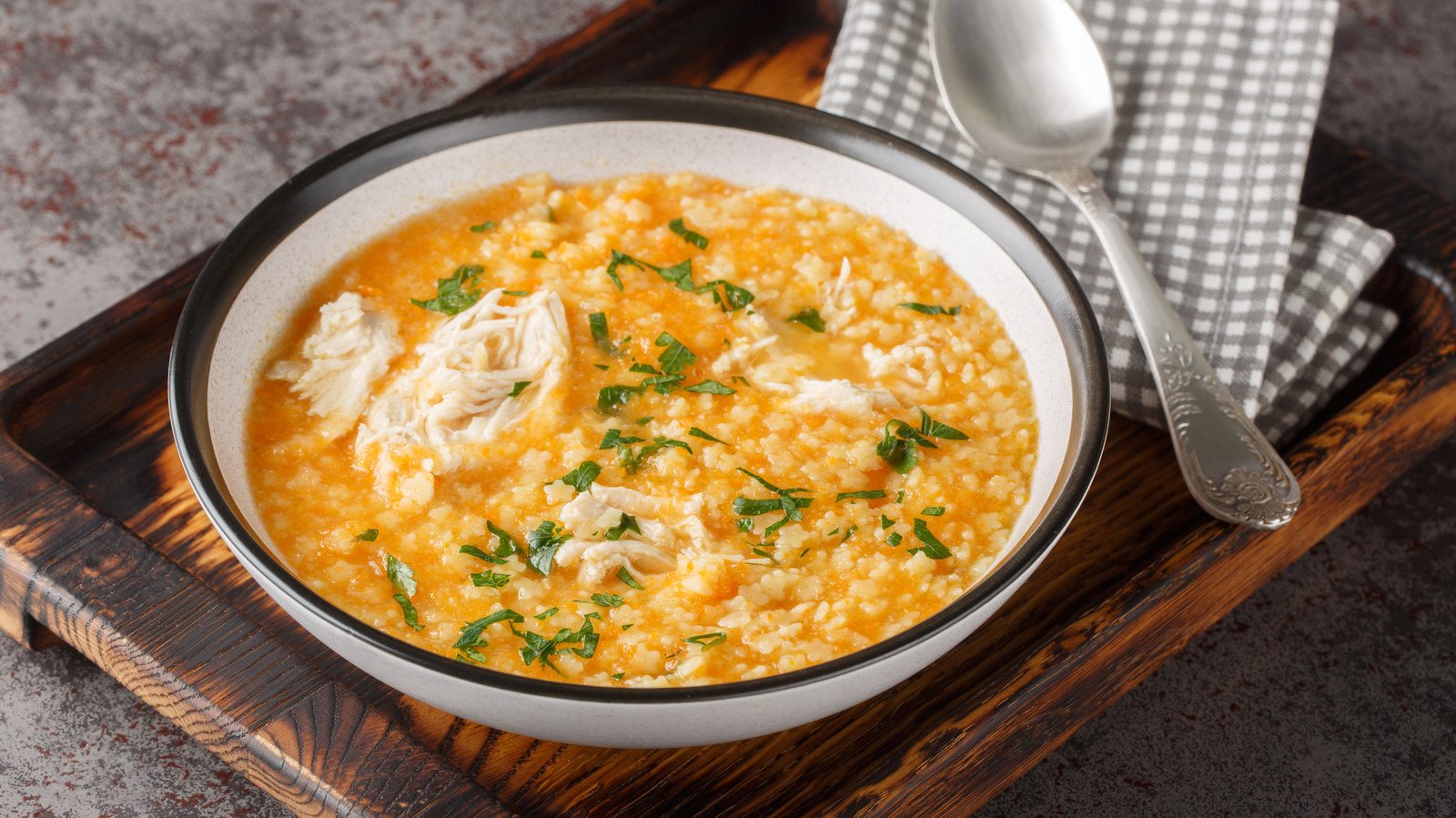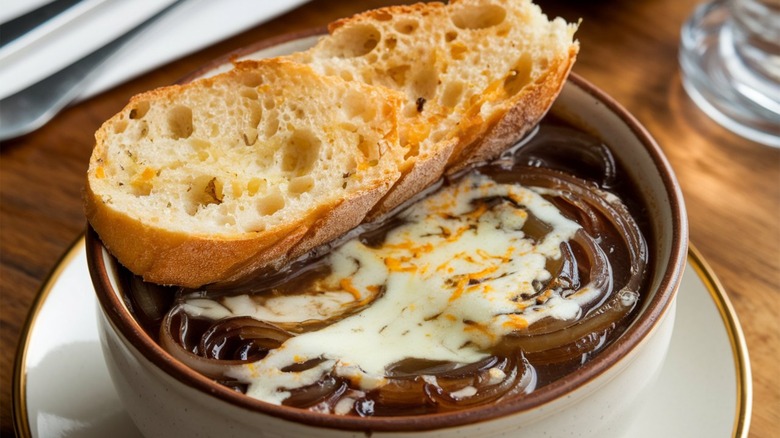Have you ever added cheese to your soup? If you have, there’s a good chance you were making French onion soup, which typically uses Gruyere, although you can make some heavenly French onion soup with Comté cheese instead. That isn’t your only option, though. You can experiment making a lasagna soup with ricotta and mozzarella, or turn your favorite dip (queso) into a cheesy soup by mixing it with cheddar or pepper jack. Admittedly, it can be a risky thought, especially if you’ve tried cooking a cheese broccoli soup before, only to find it bizarrely clumpy and grainy.
The problem is that anytime you melt cheese, you run the risk of curdling it or separating the cheese into unappetizing clumps and grease. How do you prevent boiling hot soup from making curds and whey out of your poor cheese? To get some advice, we asked Maxine Sharf, the culinary creator and recipe developer who’s behind Maxi’s Kitchen. According to Sharf, the most important thing to remember is to turn down the heat on your soup before you add any cheese: “Turn the heat way down and stir it in at the very end. If the soup is too hot, cheese can seize up or separate.”
Add cheese when the soup isn’t very hot
Essentially, any step in the soup-making process which involves boiling or high heat should always be completed before you add cheese. For a soup like French onion where the cheese is melted on top, this is rather simple and most recipes will tell you to grate that Gruyere on at the very end before broiling. It’s a little more complicated for soups where the cheese is a central ingredient, like in a cheesy broccoli soup, where it’s smoothly blended in with other ingredients.
The scientific reason why a cheesy soup becomes grainy has to do with the way cheese is created: Milk contains a protein called casein, and when milk is curdled into cheese, these proteins hold together the fat and water. It’s a fairly weak bond, though. Heating cheese at the right temperature undoes those bonds as the cheese melts beautifully, but heating it up too quickly will destroy it and cause too much water to seep out, turning the cheese into separated clumps of protein and oily puddles of fat. Certain types of cheese melt better than others — the invention of American cheese changed the cheese world with how easily it melts without separating. There are pros and cons to any melting cheese, but as Maxine Sharf says, no cheese can survive too much heat, so save the cheese until the very end, when your soup is on low heat or off the heat entirely.






